Matthias Berger (Leader Task 3.1) and Luca Brauchli describe the progress and work-flow within Task 1 of Work Package WP03
For the creation of scenarios as well as the modeling and optimization of energy systems (inside and outside of SWEET DeCarbCH), thermal networks are a key component of the energy transition.
In Task 3.1 of Work Package WP03, the main work of the Assessment group of the Competence Center for Thermal Energy Storage of the HSLU is creating suitable descriptions of thermal networks.
Thermal networks are available in a wide variety and are tailored to the respective local conditions. Heat is transported from the source to the sink at various temperature levels reaching from hot steam to water that is not even lukewarm. When cooling is added as a function, the sink can become the source. Prosumers can be the source and sink at different times. Thermal grids often use thermal energy storage to bridge supply and demand, with periods ranging from hours to months.
Carbon neutral fuels such as waste or wood can be burned, but oil and gas are still used today in many cases and for different reasons. In the future, we expect more environmental heat sources and waste heat to be implemented in thermal networks. In summary, Switzerland's more than a thousand heating networks are anything but uniform.
Task 3.1 addresses the problem of describing thermal networks by following the archetype approach that has already been successfully applied for building energy models. Data inputs are the scientific literature and reports, consult from experts, and knowledge built on the work of the VFS, Verband Fernwärme Schweiz. Three main components are distilled in our database:
- A list of relevant parameters and formulas for describing and modeling thermal networks (on costs, materials, thermodynamic properties, etc.)
- Classification of thermal networks into archetypes, probably starting with primary fuel as the first level selection criterion; the parameters are determined for a generic size within each archetype, and scaling factors and constraints are provided
- A collection of case studies, at least one per archetype, in which detailed data (e.g., time series, topology) are made available for benchmarking and scenario building
The representation of archetypes is delivered directly towards WP1 and the activities around SWEET CROSS. Because there are very diverse needs within the SWEET energy modeling community, it is encouraged that all interested parties get in touch if there is a specific data need, research question, or modeling challenge. Task 3.1 tries to capture all requests and provide a holistic database.
